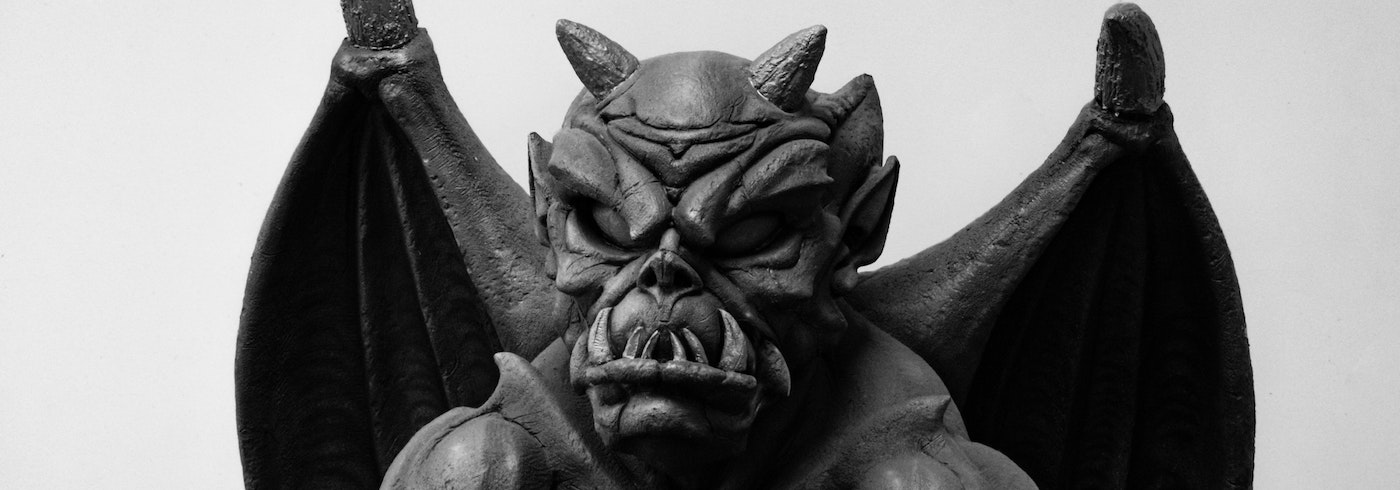Dealing With the Devil
Gary Tyra’s latest book offers a Pentecostal perspective on a controversial topic
In The Screwtape Letters, C.S. Lewis wrote, “There are two equal and opposite errors into which our race can fall about the devils. One is to disbelieve their existence. The other is to believe, and to feel an excessive and unhealthy interest in them.”
Gary Tyra carefully avoids both errors in The Dark Side of Discipleship. He offers a realistic but not sensationalistic perspective on how Christians should “deal with the devil” as they pursue “spiritual, moral, and missional faithfulness” to Jesus Christ.
Tyra is professor of biblical and practical theology at Vanguard University of Southern California and an ordained Assemblies of God minister.
He divides The Dark Side into four parts:
Part One examines “the devil’s reality, origin, nature, and deal (what he’s about).” In conversation with contemporary scholarship, Tyra affirms the traditional view that the devil is a fallen angel. Citing Scripture, he shows that the devil’s “primary goal is to keep human beings from entering into, and then enduring in, a restored, intimate, interactive, life-story-shaping, fruit-bearing relationship with their creator.”
In Part Two, Tyra identifies four strategies the devil uses to achieve his goal: seduction, deception, alienation, and temptation. The devil directs these strategies against “the four cardinal components of the Christian life”: worship, nurture (i.e., teaching), community, and mission, respectively.
Tyra’s emphasis on missional faithfulness is especially helpful. Too often, church discipleship efforts are inward-focused, but following Jesus requires an outward focus, too.
After all, as Tyra summarizes the matter, Jesus’ mission was twofold: “revelation and redemption.” He came to show humanity “who God truly is and what he’s really about.” More than knowledge, however, Christ came to effect a restored relationship between “fallen, sinful humankind (and all creation) to its Creator.”
Christ now sends the Church into the world with this redemptive message. A failure of mission, then, reflects a failure of discipleship. To follow Jesus, disciples must follow Him to the lost whom He came to save.
To follow Jesus, disciples must follow Him to the lost whom He came to save.
In Part Three, Tyra outlines seven “spiritual warfare moves” to resist the devil’s strategies. Spiritual warfare is a hot topic in Pentecostal and charismatic circles these days. Unfortunately, some spiritual warriors exhibit the excessive interest Lewis described — going well beyond biblical revelation and into the region of human imagination. By contrast, Tyra hews closely to key biblical texts, especially Ephesians 6:10-20, highlighting their “pneumatologically real” aspects.
Pneumatological realism — which Tyra explores at length in a previous book, Getting Real — “insists that, rather than conceive of the Holy Spirit as a philosophical concept or impersonal force that is simply presumed to be at work in believers’ lives, he can and should be known and interacted with in ways that are personal, phenomenal, and life-story-shaping.”
For Tyra, Christians deal with the devil most effectively by drawing ever closer to Jesus Christ through the power of the Holy Spirit.
Finally, in Part Four, Tyra turns to an apologetic question: Given the devil’s destructive goals, why does an all-knowing, all-powerful, completely good God allow him to operate? Philosophers refer to questions such as this as “the problem of evil.”
Interacting with open-theist theologians particularly, Tyra advances “a biblically informed theodicy that retains the emphasis [open theists] place on the relational nature of God, but doesn’t require a revised understanding of his foreknowledge.” Moreover, he believes this theodicy “encourages an enthusiastic participation in what the Bible portrays as God’s defeat of Satan.”
That defeat is God’s final word about the dark side of discipleship. In this life, we cultivate what Tyra calls a “lifestyle spirituality” of spiritual, moral, and missional faithfulness to Christ through an ongoing experience of the Holy Spirit. All the while, whatever difficulties we encounter, we retain hope because we believe the truth of Paul’s words:
“The God of peace will soon crush Satan under your feet” (Romans 16:20).
I recommend The Dark Side of Discipleship to church leaders and church members. It offers a faithful, Pentecostal perspective on a controversial topic. Reflection questions at the end of each chapter make it ideal for use by small groups and book clubs.
BOOK REVIEWED
Gary Tyra, The Dark Side of Discipleship: Why and How the New Testament Encourages Christians to Deal with the Devil (Eugene, OR: Cascade Books, 2020).
This article appears in the January-March 2021 edition of Influence magazine.
Influence Magazine & The Healthy Church Network
© 2026 Assemblies of God

